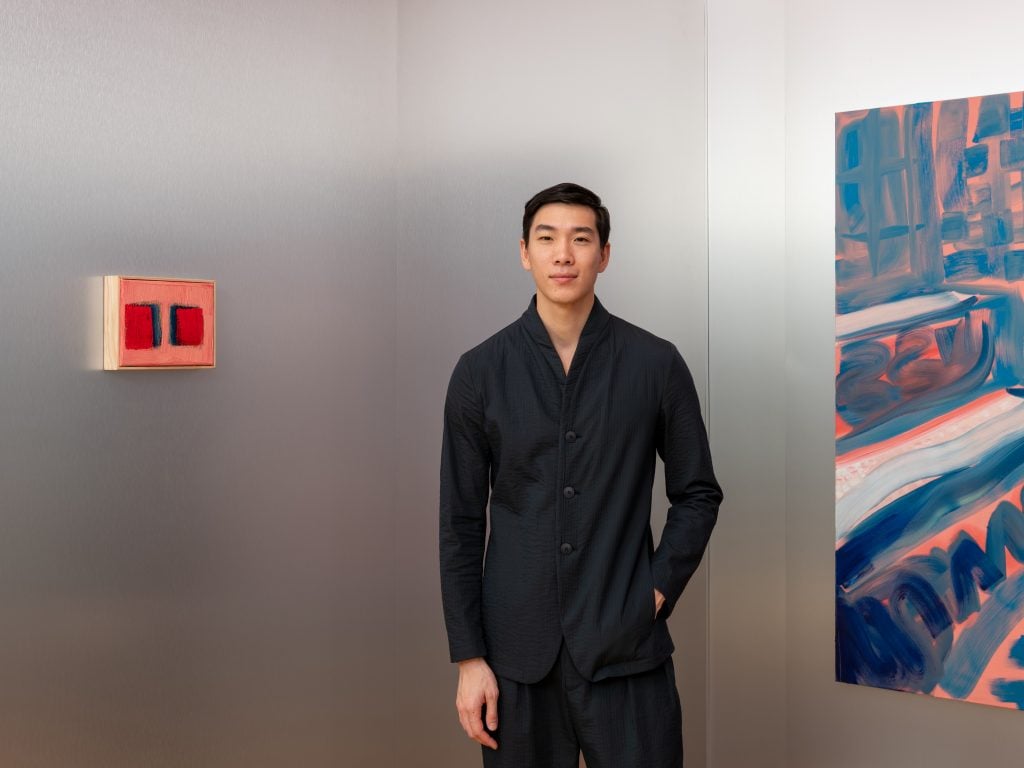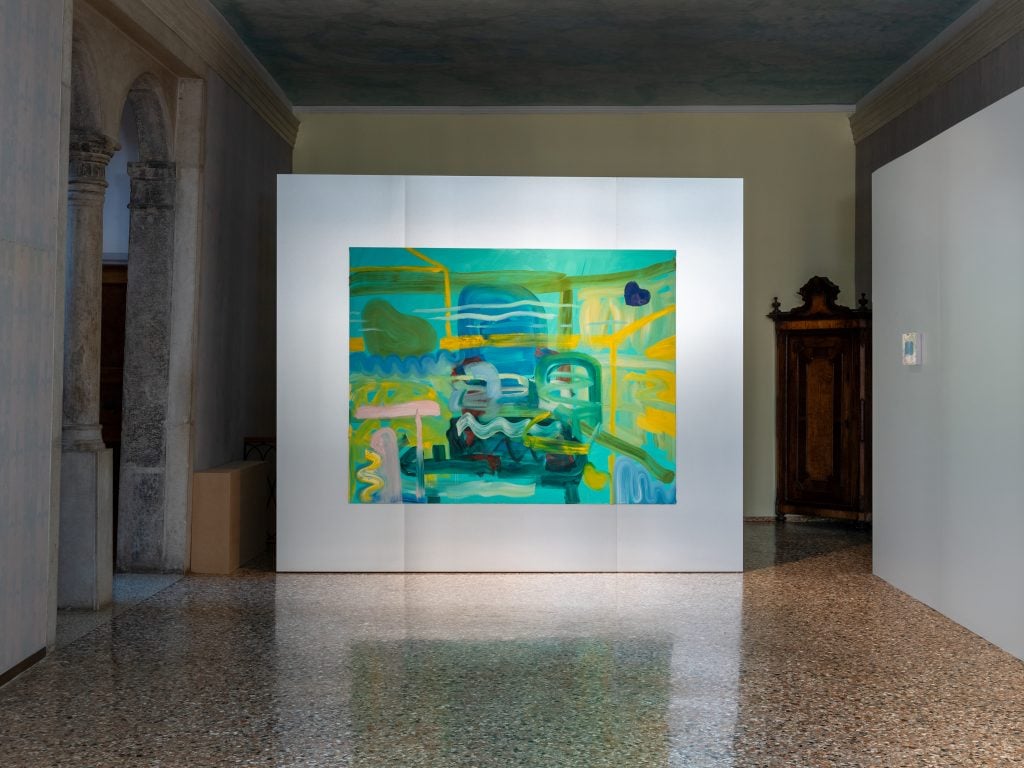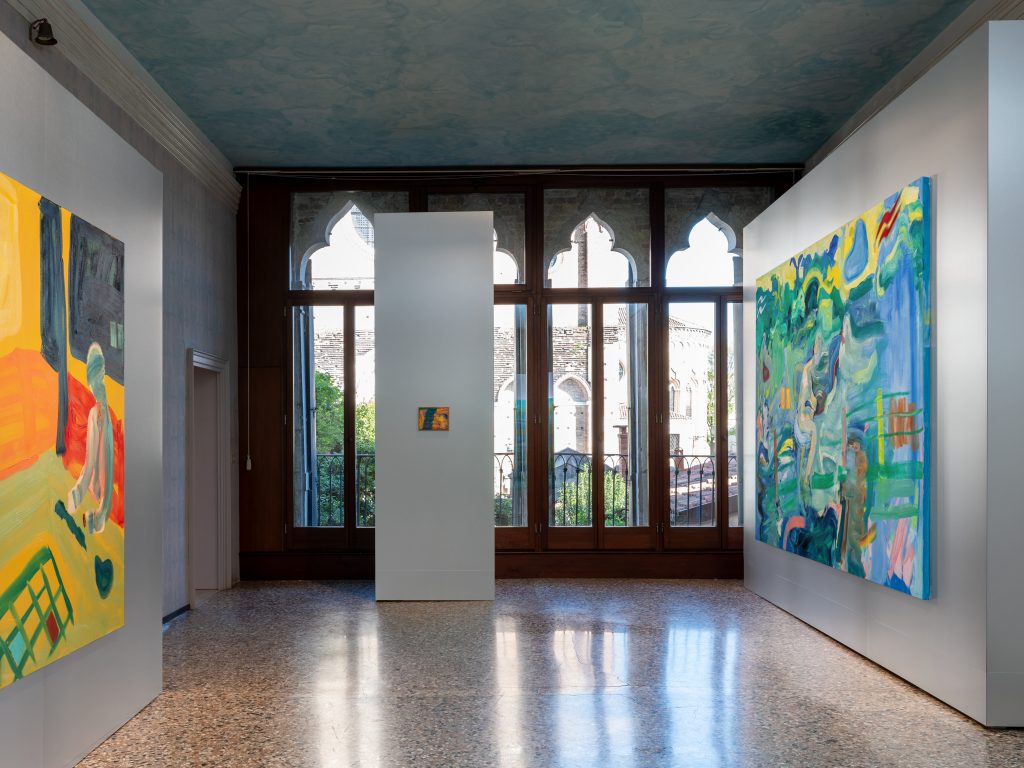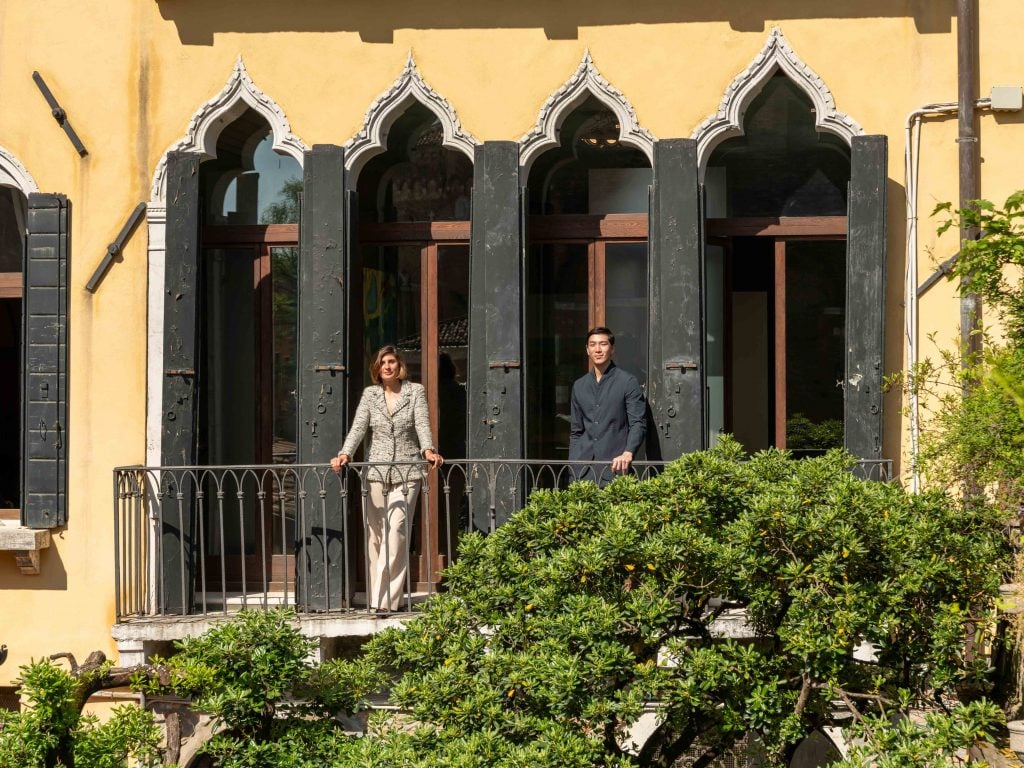Gallery Network
7 Questions for Channatip Chanvipava on Painting His Own Identity as a ‘Foreigner’
Presented by Roman Road, the exhibition is staged in a historic Venetian residence.

Presented by Roman Road, the exhibition is staged in a historic Venetian residence.

Artnet Gallery Network

Opening to the public April 17, 2024, curatorial and studio platform Roman Road is presenting the first solo show in Venice of Thai artist Channatip Chanvipava (b. 1993). The exhibition, titled “The Sound of Many Waters,” coincides with the first weeks of the much-anticipated 60th Venice Biennale. Curated by Roman Road founder Marisa Bellani, the exhibition is set within a historic Venetian building and features eight new, never-before-seen works that tap into ideas around identity, belonging, and memory. Together, the works on view—and the artist’s practice—align with the theme of the Venice Biennale, exploring how both rifts and connections can be found within the complexities of queer identity.
Chanvipava initially studied economics, receiving his bachelors in the subject in 2016, before ultimately choosing to pursue art. While Chanvipava had developed a painting practice on his own, he also studied at the Royal College of Art in London, where he is currently based. He has had his work included in group and solo shows both nationally and internationally, and, last year, he completed a residency in Suffolk, England.
Ahead of the exhibition’s opening, we reached out to Chanvipava to learn more about what went into creating the works for the show and his practice.

Installation view of “Channatip Chanvipava: The Sound of Many Waters” (2024). Photo: Deniz Guzel. Courtesy of Roman Road.
Your debut solo exhibition in Venice with Roman Road opens this month. Can you tell us about the body of work going on view, and any primary themes or inspirations?
This show is a series of autobiographical paintings that relate to my observations, stories, and subjective experiences. These include explorations of fantasy as a conduit for identity, as well as familiar moments such as a scene from a meal with my in-laws and keystone events in my life such as marrying my husband and our child’s conception. Within each painting, there is a narrative which is personal to me, but is also used to express wider societal concerns that extend beyond the individual, such as queer identity. These moments are collaged and distilled through an impulsive and meditative process.
Did the city itself or the venue, a 17th-century Venetian ‘dimora,’ influence or inform how you approached the works included?
The intimate setting of the ‘dimora’ was chosen in response to the paintings. The term means “dwelling,” and this seemed particularly relevant because my process involves dwelling on memories.
I have also created a site-specific installation in response to the “dimora,” which forms a physical connection between the paintings and the location. The context in which my paintings are seen is important; I am trying to extend beyond the canvas and create a continuation of the viewer’s experience. The paintings are presented within a metal installation, allowing the viewer to immerse themselves in reflections and explore the movement of body and eye around each painting.

Installation view of “Channatip Chanvipava: The Sound of Many Waters” (2024). Photo: Deniz Guzel. Courtesy of Roman Road.
Describe your working process, do you begin with a clear idea of what you want to accomplish on the canvas, or is it more fluid and intuitive? Do you work on one piece at a time or move between them?
My works are explicitly autobiographical and profoundly self-referential. My process starts by selecting remembered images to convey a narrative, which I collage together in my mind. I experiment with ideas, narratives, and compositions mentally, without sketching or organizing a color palette. I then paint the mental composition directly onto the canvas using impulse and fluid intuition, allowing for a very raw and honest expression. The method serves as a restorative process in which I can engage with the politics and mechanics of remembrance.
I am unable to move between paintings and need to finish one before I start another. Each work is the product of long and restorative meditations on times past, working and reworking captured moments. I feel it would be both difficult and insincere of me to divide my focus across multiple paintings at once.

Marisa Bellani and Channatip Chanvipava. Photo: Deniz Guzel. Courtesy of Roman Road.
What was the experience like working with curator Marisa Bellani?
Marisa and I have worked on many shows together previously. We share a meaningful ongoing dialogue, and this experience has been particularly rewarding.
Marisa invited me to showcase my work because she saw an intrinsic link between my work and the curatorial title of this year’s Venice Biennale: “Stranieri Ovunque” (“Foreigners Everywhere”). The development of the show has effectively drawn together many interconnected strands, and her curation has allowed my paintings to be presented and interpreted within a new context.
How do you see your solo show complementing or dialoguing with the theme of the 60th Venice Biennale, “Foreigners Everywhere”?
The theme “Foreigners Everywhere” draws out the role of the queer artist, the outsider, the self-taught artist, and the artist from the global south, all of which speaks directly to me. My paintings use abstraction in combination with figurative elements to capture elements of my identity and my experiences as a queer artist.
The paintings in my solo show, “The Sound of Many Waters,” draw on autobiographical moments that relate to wider themes of belonging, queer sensibilities, and queer conceptions of non-linear time. In particular, the exhibition focuses on water as a site for addressing the complexities of identity in a divided world. Water is both formless and adaptable, a symbol for both connection and division, a means of turning people into “foreigners” and of bringing them home again.

Installation view of “Channatip Chanvipava: The Sound of Many Waters” (2024). Photo: Deniz Guzel. Courtesy of Roman Road.
What do you hope visitors to the show take away with them?
I would like viewers to respond and relate to the paintings in their own ways. I hope they will be able to take away something they have forgotten or was previously unknown to them.
What’s next? Are there any projects you have planned or hope to work on soon?
I am planning my next painting, and I am also looking forward to my next show, which will be at Ronchini in London this September.

Installation view of “Channatip Chanvipava: The Sound of Many Waters” (2024). Photo: Deniz Guzel. Courtesy of Roman Road.
“Channatip Chanvipava: The Sound of Many Waters” is on view at Dimora ai Santi Calle Larga Giacinto Gallina, Canneregio 6381, 30121, Venezia through May 27, 2024.